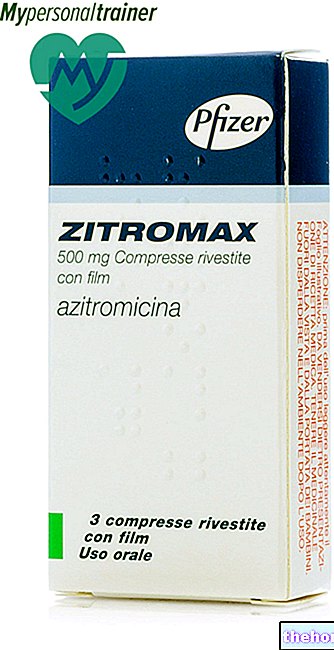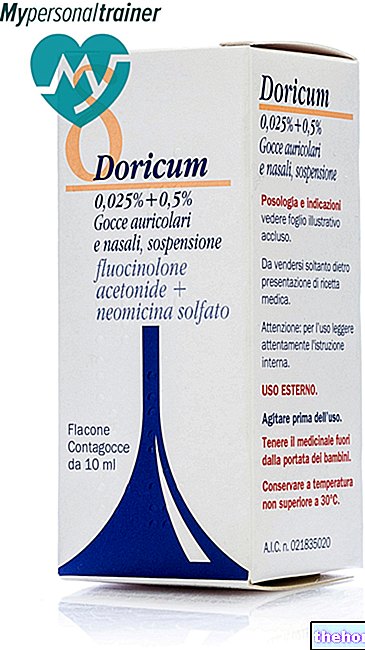Active ingredients: Mesalazine (5-ASA)
PENTASA 500 mg modified release tablets
PENTASA 1 g prolonged release granules
Pentasa package inserts are available for pack sizes: - PENTASA 500 mg modified-release tablets, PENTASA 1 g prolonged-release granules
- PENTASA 1 g suppositories
- PENTASA 4 g / 100 ml rectal suspension
Indications Why is Pentasa used? What is it for?
Pentasa contains the active substance mesalazine, which belongs to a group of medicines called salicylates, intestinal anti-inflammatories used to treat ulcerative colitis and Crohn's disease.
Ulcerative colitis is a disease of the colon (large intestine) and rectum in which the inner lining of the intestine becomes red and swollen (inflamed), with symptoms such as frequent bowel movements and bloody stools, accompanied by stomach cramps.
When given for an acute episode of ulcerative colitis, Pentasa works along the entire colon and rectum to treat inflammation and reduce symptoms. The tablets can also be taken to help prevent ulcerative colitis from returning.
In the severe active phase, the association with cortisone drugs may be advisable.
Contraindications When Pentasa should not be used
Do not use Pentasa
- if you are allergic to the active substance or any of the other ingredients of this medicine (listed in section 6)
- if you are allergic to a class of drugs known as salicylates (e.g. aspirin)
- in children under 6 years of age
- during the last weeks of pregnancy and during lactation (see "Pregnancy, lactation and fertility")
- if you have severe kidney or liver problems.
Precautions for use What you need to know before taking Pentasa
Talk to your doctor or pharmacist before using Pentasa:
- if you are allergic to sulfasalazine (allergy to salicylates)
- if your liver is functioning poorly or poorly
- if you suffer from kidney problems. Mesalazine induces nephrotoxicity (kidney toxicity), so it must be discontinued in patients who develop kidney dysfunction during treatment.
- if you are being treated with medicines that can affect your kidney function, such as non-steroidal anti-inflammatory drugs (NSAIDs) and azathioprine, as they can increase the risk of kidney reactions
- if you are being treated with azathioprine or 6-mercaptopurine and thioguanine as these are medicines that may increase the risk of blood dyscrasias (blood disorders). Treatment should be reduced or discontinued in the presence of these adverse reactions
- if you have particularly slow stomach digestion or are a carrier of pyloric stenosis (narrowing of the part of the stomach that leads into the small intestine)
- if you have breathing problems such as asthma.
Especially during the initial phase of treatment, your doctor may order urine and blood tests to evaluate the function of your kidneys, liver.
Children and adolescents
Pentasa is not recommended for use in children under 6 years of age.
Interactions Which drugs or foods can modify the effect of Pentasa
Tell your doctor if you are using, have recently used or might use any other medicines, including those that can be taken without a prescription.
This is especially important if you are taking medications such as:
- Azathioprine, 6-mercaptopurine and thioguanine (known as 'immunosuppressive' drugs that reduce the activity of your immune system).
- Coumarin anticoagulants (medicines that increase the time it takes for blood to clot). For example warfarin.
Pentasa with food and drink
This medicine can be taken with food and drink (see section 3).
Warnings It is important to know that:
Pregnancy, breastfeeding and fertility
If you are pregnant or breast-feeding, think you may be pregnant or are planning to have a baby, ask your doctor or pharmacist for advice before using this medicine.
Pentasa should be used with caution during pregnancy or breastfeeding, and only if absolutely necessary (see also section 2 "Do not use Pentasa").
Blood disorders have been observed in infants of mothers treated with Pentasa.
Allergic reactions such as diarrhea in newborns cannot be excluded.
If the infant experiences diarrhea, breastfeeding should be discontinued.
Driving and using machines
Treatment with Pentasa does not normally affect the ability to drive and / or use machines.
Dose, Method and Time of Administration How to use Pentasa: Posology
Always use this medicine exactly as your doctor or pharmacist has told you. If in doubt, consult your doctor or pharmacist.
The recommended dose is:
Adults:
In ulcerative colitis
Acute treatment: up to 4 g of mesalamine once daily or divided into 2-4 administrations
Maintenance treatment: it is recommended to start with 1,500 mg of mesalamine per day, divided into 3 doses.
In Crohn's disease
Acute treatment: up to 3-4 g of mesalamine per day, divided into 2-3 administrations.
Maintenance treatment: it is recommended to start with 3 g of mesalamine per day, divided into 3 administrations.
Use in children
Children from 6 years of age
It is generally recommended that half the adult dose be given to children up to 40 kg body weight and the normal adult dose to those over 40 kg body weight.
- Acute treatment: starting with 30-50 mg / kg / day in separate administrations. Maximum dose: 75 mg / kg / day in separate administrations. The total dose should not exceed 4 g / day (maximum adult dose).
- Maintenance treatment: starting with 15-30 mg / kg / day in separate administrations. The total dose should not exceed 2 g / day (recommended adult dose).
The tablets or sachets can be taken during or shortly after a meal. Pentasa can be taken with water or yogurt. The tablets can be swallowed whole or, alternatively, they can also be broken or dissolved in a glass or spoon with a little water.
Pentasa tablets or granules must not be chewed. After opening the sachet, the granules must be taken within 24 hours (see "How to store Pentasa").
If you forget to take Pentasa
If you forget to take a dose of Pentasa, take your next scheduled regular dose at the usual time.
Do not take a double dose to make up for a forgotten dose.
If you stop taking Pentasa
Your doctor will tell you how long the treatment will last. Talk to your doctor before stopping treatment with this medicine.
If you have any further questions on the use of this medicine, ask your doctor or pharmacist.
Overdose What to do if you have taken too much Pentasa
If you have taken more tablets or sachets than you should, contact your doctor immediately or go to the nearest hospital.
Side Effects What are the side effects of Pentasa
Like all medicines, this medicine can cause side effects, although not everybody gets them.
Common side effects (may affect up to 1 in 10 people):
- Headache
- Diarrhea
- Abdominal pain
- Nausea
- He retched
- Flatulence (intestinal gas)
- Skin rashes, such as hives, erythema.
Rare side effects (may affect up to 1 in 1,000 people):
- Dizziness
- Mio- and pericarditis (inflammation of certain parts of the heart)
- Acute pancreatitis (acute inflammation of the pancreas) and increased amylases (enzymes of the pancreas).
Very rare side effects (may affect up to 1 in 10,000 people):
- Blood disorders such as eosinophilia (increase in a type of white blood cell called eosinophils), anemia (decrease in red blood cells), aplastic anemia (a form of anemia characterized by insufficient production of blood cells of all types in the bone marrow ), leukopenia (decrease in white blood cells), thrombocytopenia (decrease in platelets), agranulocytosis (decrease in a type of white blood cell called granulocytes), pancytopenia (decrease in all blood cells)
- Hypersensitivity (allergy) reactions including allergic rash, anaphylactic reaction, drug reaction with eosinophilia and systemic symptoms (DRESS), erythema multiforme and Steavens-Johnson syndrome (SJS)
- Drug fever
- Peripheral neuropathy (pathological condition affecting the nerves of the hands and feet)
- Allergic alveolitis, allergic reactions and lung disorders (pulmonary fibrotic reactions, including difficulty in breathing (dyspnoea), cough, bronchospasm, eosinophilic pneumonia, interstitial lung disease, pulmonary infiltration, pneumonia)
- Pancolitis (inflammation of the colon)
- Liver disorders (increased liver enzymes, cholestatic indices and bilirubin, hepatoxicity, including hepatitis, cholestatic hepatitis, cirrhosis, liver failure)
- Alopecia (hair loss or thinning) reversible
- Muscle pain (myalgia), joint pain (arthralgia), cases of lupus erythematosus-like immune reactions
- Kidney disorders (acute and chronic interstitial nephritis, nephrotic syndrome, renal failure, urine discoloration)
- Oligospermia (low concentration of sperm in semen) reversible.
Some of the side effects can also be attributed to the disease itself.
Reporting of side effects
If you get any side effects, talk to your doctor or pharmacist. This includes any possible side effects not listed in this leaflet. You can also report side effects directly via the national reporting system at www.agenziafarmaco.gov.it/it/responsabili. By reporting side effects you can help provide more information on the safety of this medicine.
Expiry and Retention
Keep this medicine out of the sight and reach of children.
After opening the sachets, the granules can be stored for 24 hours, after which it must be discarded.
Do not use this medicine after the expiry date which is stated on the package after "EXP". The expiry date refers to the last day of that month. This date refers to the product in intact packaging, correctly stored.
Do not throw any medicines via wastewater or household waste. Ask your pharmacist how to throw away medicines you no longer use. This will help protect the environment.
Deadline "> Other information
What Pentasa contains
Modified-release tablet:
- The active ingredient is mesalamine
- The other ingredients are: polyvinylpyrrolidone, ethylcellulose, magnesium stearate, talc, microcrystalline cellulose.
Sachet of extended-release granules:
- The active ingredient is mesalamine
- The other ingredients are: ethylcellulose, microcrystalline cellulose.
Description of what Pentasa looks like and contents of the package
Pentasa 500 mg modified-release tablets: The tablets are presented with small white-gray to light brown spots and a score line. 500 mg is imprinted on one side and PENTASA on the other. Box of 50 tablets.
Pentasa sachets 1 g extended release granules: white-gray to white-light brown granules. Box of 50 sachets.
Source Package Leaflet: AIFA (Italian Medicines Agency). Content published in January 2016. The information present may not be up-to-date.
To have access to the most up-to-date version, it is advisable to access the AIFA (Italian Medicines Agency) website. Disclaimer and useful information.
01.0 NAME OF THE MEDICINAL PRODUCT -
PENTASA
02.0 QUALITATIVE AND QUANTITATIVE COMPOSITION -
One modified-release tablet contains: mesalamine (5-amino-salicylic acid) 500 mg.
One sachet of prolonged-release granules contains: mesalazine (5-amino-salicylic acid) 1 g.
For the full list of excipients, see section 6.1.
03.0 PHARMACEUTICAL FORM -
Modified-release, scored tablets with small white-gray to light brown spots, score line and imprint: 500 mg on one side, PENTASA on the other.
Extended-release granules, white-gray to white-light brown in color.
04.0 CLINICAL INFORMATION -
04.1 Therapeutic indications -
Ulcerative colitis. Crohn's disease.
Pentasa is indicated both in the treatment of the active phase of the disease and in the prevention of relapses. In the severe active phase, the association with cortisone treatment may be advisable.
04.2 Posology and method of administration -
Dosage
The dosage should be adapted to the individual patient based on the severity of the disease. In ulcerative colitis
Acute treatment: up to 4 g of mesalamine once daily or divided into 2-4 administrations.
Maintenance treatment: it is recommended to start with 1500 mg of mesalamine per day, divided into 3 doses.
In Crohn's disease
Acute treatment: up to 3-4 g of mesalamine per day, divided into 2-3 administrations.
Maintenance treatment: it is recommended to start with 3 g of mesalamine per day, divided into 3 administrations.
Pediatric population
There is only limited documentation of an effect in children (6-18 years). Children from six years of age
Acute treatment: must be established individually, starting with 30-50 mg / kg / day in separate administrations. Maximum dose: 75 mg / kg / day in separate administrations. The total dose should not exceed 4 g / day (maximum adult dose).
Maintenance treatment: must be established individually, starting with 15-30 mg / kg / day in separate administrations. The total dose should not exceed 2 g / day (recommended adult dose).
It is generally recommended that half the adult dose be given to children up to 40 kg body weight and the normal adult dose to those over 40 kg body weight.
Method of administration
Pentasa tablets or granules must not be chewed.
The tablets or sachets can be taken during or shortly after a meal. You can also break the tablets or let them disintegrate in a glass or on a spoon with water. Pentasa can be taken with water or yogurt.
04.3 Contraindications -
Hypersensitivity to the active substance, to salicylates, or to any of the excipients listed in section 6.1.
Children under the age of 6.
Last weeks of pregnancy and lactation (see section 4.6). Severe renal or hepatic insufficiency.
04.4 Special warnings and appropriate precautions for use -
Relapses of objective and subjective symptoms can occur both after discontinuation of therapy and during inadequate maintenance treatment. The possible occurrence of hypersensitivity reactions involves the immediate suspension of therapy. In patients who have slow digestion or are carriers of a pyloric stenosis, it may sometimes be possible to have a release of 5-ASA already in the stomach, with consequent gastric irritation and a loss of efficacy of the drug.
Pentasa should be used with caution in patients allergic to sulfasalazine (risk of allergy to salicylates). In case of acute intolerance reactions such as abdominal cramps, acute abdominal pain, fever, severe headache and rash, treatment should be discontinued immediately.
Caution is advised in patients with impaired hepatic function. Parameters of liver function, such as ALT or AST, should be evaluated at initiation and during treatment, at the physician's discretion.
The use of Pentasa is not recommended in patients with renal disorders. Renal function should be regularly monitored (eg serum creatinine), especially during the initial phase of treatment. Mesalazine induces nephrotoxicity, therefore it should be discontinued in patients who develop renal dysfunction during treatment In case of concomitant use of other nephrotoxic agents, such as NSAIDs and azathioprine, the frequency of monitoring of renal function should be increased.
Patients with lung diseases, particularly asthma, should be closely monitored during treatment.
Cardiac hypersensitivity reactions to mesalamine (mine and pericarditis) and very rarely severe blood dyscrasias have been reported rarely. Blood tests for differential blood counts are recommended at the initiation and during treatment, at the physician's discretion. Concomitant treatment with mesalamine may increase the risk of blood dyscrasia in patients receiving azathioprine or 6-mercaptopurine or thioguanine. (see section 4.5) Treatment should be discontinued if these adverse reactions are suspected or occur.
04.5 Interactions with other medicinal products and other forms of interaction -
Concomitant therapy of PENTASA and azathioprine or 6-mercaptopurine or thioguanine has shown a higher frequency of myelosuppressive effects in several studies, and although the mechanism of interaction has not been fully established, a correlation appears to exist. Regular monitoring is recommended. white blood cells and the thiopurine dosage should be adjusted accordingly.
Mesalamine may decrease the anticoagulant effect of warfarin.
04.6 Pregnancy and breastfeeding -
Pentasa should be used with caution during pregnancy or breastfeeding and only if the potential benefits outweigh, in the judgment of the physician, the possible risks. Mesalazine crosses the placental barrier and its concentration in the umbilical cord plasma is lower than that. in maternal plasma. The acetyl-mesalazine metabolite was found in similar concentrations in umbilical and maternal cord plasma. In several observational studies no teratogenic effects were reported and there is no evidence of significant risk in human use. Animal studies with oral mesalazine did not indicate direct or indirect adverse effects with respect to pregnancy, embryo-fetal development, parturition or postnatal development. Blood disorders (pancytopenia, leukopenia, thrombocytopenia, anemia) have been reported in neonates of mothers treated with Pentasa. .
Mesalamine is excreted in breast milk. The concentration of mesalamine in breast milk is lower than in maternal blood while the metabolite, acetyl-mesalazine, is in similar or higher concentrations. There is "limited experience" of the oral use of mesalamine in breastfeeding women. No controlled studies have been conducted with Pentasa during breastfeeding. Hypersensitivity reactions such as diarrhea in neonates cannot be excluded. If the infant experiences diarrhea, breastfeeding should be discontinued.
Animal studies of mesalamine have shown no effects on male and female fertility.
04.7 Effects on ability to drive and use machines -
Treatment with Pentasa is unlikely to affect the ability to drive and / or use machines.
04.8 Undesirable effects -
Side effects are listed below by organ, organ / system, and MedDRA frequency. Frequencies are defined as: very common (1/10) common (≥ 1/100 a
Frequency of adverse events based on clinical trials and post-market monitoring reports
(*) the mechanism by which mesalazine induces myo- and pericarditis, pancreatitis, nephritis and hepatitis is unknown, but it is probably allergic in nature.
It is important to note that many of the side effects can also be attributed to IBD itself.
Reporting of suspected adverse reactions.
Reporting of suspected adverse reactions occurring after authorization of the medicinal product is important as it allows continuous monitoring of the benefit / risk balance of the medicinal product. Healthcare professionals are asked to report any suspected adverse reactions via the national reporting system. "address www.agenziafarmaco.gov.it/it/responsabili.
04.9 Overdose -
Acute experience in the animal:
Oral doses of mesalamine up to 5 g / kg in pigs or single intravenous doses of mesalazine up to 920 mg / kg in rats were not lethal.
Experience in man:
Limited clinical experience of overdose does not indicate renal or hepatic toxicity. A specific antidote is not known and treatment is symptomatic and supportive. Treatment of overdose in humans:
Symptomatic treatment in a hospital setting. Careful monitoring of renal function.
05.0 PHARMACOLOGICAL PROPERTIES -
05.1 "Pharmacodynamic properties -
Pharmacotherapeutic group: intestinal anti-inflammatories, amino salicylic acid and analogues.
ATC: A07EC02.
Mesalamine has been found to be the active ingredient in sulfasalazine, which is used for the treatment of ulcerative colitis, Crohn's disease and proctitis.
Clinical studies show that the therapeutic value of mesalazine, after oral or rectal administration, appears to be due to a local effect on the inflamed intestinal mucosa rather than a systemic one.
IBD patients present: increased leukocyte migration, abnormal cytokine production, increased production of arachidonic acid metabolites, in particular leukotriene B4, and increased formation of free radicals in the inflamed intestinal mucosa. Mesalazine has, both in -vitro that in-vivo, a pharmacological effect that inhibits leukocyte chemotaxis, decreases the production of cytokines and leukotrienes and neutralizes free radicals. It is currently unknown which of these mechanisms plays a predominant role in the clinical efficacy of mesalazine.
05.2 "Pharmacokinetic properties -
Local availability: the therapeutic activity of mesalazine most likely depends on the local contact of the drug with the diseased intestinal mucosa area.
Pentasa modified release sachets and tablets consist of mesalamine microgranules coated with ethylcellulose. Following administration and disintegration of the tablets, mesalamine is continuously released from the individual microgranules throughout the gastrointestinal tract at different enteral pH conditions.
The microgranules arrive in the duodenum within one "hour of administration, regardless of" concomitant food intake. The average transit rate in the small intestine is approximately 3-4 hours in healthy volunteers.
Absorption
Based on urine data from healthy volunteers, 30-50% of the ingested dose is absorbed following oral administration, predominantly in the small intestine.
Mesalazine is detectable in plasma as early as 15 minutes after administration. The maximum plasma concentration is obtained after 1-4 hours. After a gradual decrease, mesalamine will no longer be detectable 12 hours after administration. The plasma concentration curve for acetyl-mesalazine follows the same pattern, but concentrations are generally higher and elimination is slower.
The metabolic ratio of acetyl-mesalazine and mesalamine in plasma after oral administration ranges from 3.5 to 1.3 after daily doses of 500 mg x3 and 2 g x3, respectively, implying dose-dependent acetylation which may be subject to saturation.
Steady state plasma concentrations of mesalamine are approximately 2 μmol / L, 8 μmol / L and 12 μmol / L after daily doses of 1.5 g, 4 g and 6 g, respectively. For acetyl mesalazine the corresponding concentrations are 6 mcmol / l, 13 mcmol / l and 16 mcmol / l.
Distribution
Mesalazine binds to plasma proteins for about 50%, acetyl-mesalazine for about 80%. 5-ASA and Ac-5-ASA do not cross the blood brain barrier.
Biotransformation
Mesalazine is metabolised both pre-systemically by the intestinal mucosa and systemically in the liver into N-acetyl-mesalazine (acetylmesalazine). Part of acetylation also occurs by the bacterial flora of the colon. Acetylation appears to be independent of the patient's acetylator phenotype.
Acetyl mesalazine is thought to be clinically and toxicologically inactive, but this has not yet been confirmed.
Elimination
The plasma half-life of mesalamine is about 40 minutes and that of acetyl-mesalazine about 70 minutes. Due to the continuous release of PENTASA throughout the gastrointestinal tract, the elimination half-life of mesalamine cannot be determined after oral administration. However, steady-state is achieved after a treatment period of 5 days following oral administration.
Both substances are excreted in the urine and faeces.
Urinary excretion mainly consists of acetyl mesalazine.
In patients with impaired hepatic or renal function, the decrease in the elimination rate and the increase in the systemic concentration of mesalazine may constitute an increased risk of adverse nephrotoxic reactions.
05.3 Preclinical safety data -
A safe toxic effect on the kidney has been demonstrated in all species. In general, toxic doses exceed those used in humans by 5-10 times.
No significant toxicity associated with the gastrointestinal tract, liver or haematopoietic system has been reported in animals.
Test in-vitro and studies in-vivo they did not show mutagenic and clastogenic effects. Studies on carcinogenic potential conducted in mice and rats did not show a substance-related increase in the incidence of tumors.
Animal studies with oral mesalazine did not indicate direct or indirect harmful effects with respect to fertility, pregnancy, embryo-fetal development, parturition or postnatal development.
06.0 PHARMACEUTICAL INFORMATION -
06.1 Excipients -
Tablets: polyvinylpyrrolidone, ethylcellulose, magnesium stearate, talc, microcrystalline cellulose.
Sachets: ethyl cellulose, microcrystalline cellulose.
06.2 Incompatibility "-
Not relevant.
06.3 Period of validity "-
Modified-release tablets: 3 years.
Extended-release granules: 2 years. After the sachets are opened, the
granulate is stable for 24 hours.
06.4 Special precautions for storage -
This medicine does not require any special storage conditions.
06.5 Nature of the immediate packaging and contents of the package -
Modified-release tablets:
Pack of 50 tablets (5 aluminum / polyamide-aluminum-polyvinyl chloride blisters).
Extended-release granules:
Pack of 50 sachets of granules. The granules are contained in aluminum sachets.
06.6 Instructions for use and handling -
No special instructions.
Unused medicine and wastes derived from this medicine must be disposed of in accordance with local regulations.
07.0 HOLDER OF THE "MARKETING AUTHORIZATION" -
Ferring S.p.A. - Via Senigallia 18/2 - 20161 MILAN
08.0 MARKETING AUTHORIZATION NUMBER -
500 mg modified release tablets, 50 tablets: 027130071
1 g extended release granules, 50 sachets: 027130083
09.0 DATE OF FIRST AUTHORIZATION OR RENEWAL OF THE AUTHORIZATION -
Pentasa sachets 1g:
Registration 22 October 1998 - Renewal of authorization June 2010




























